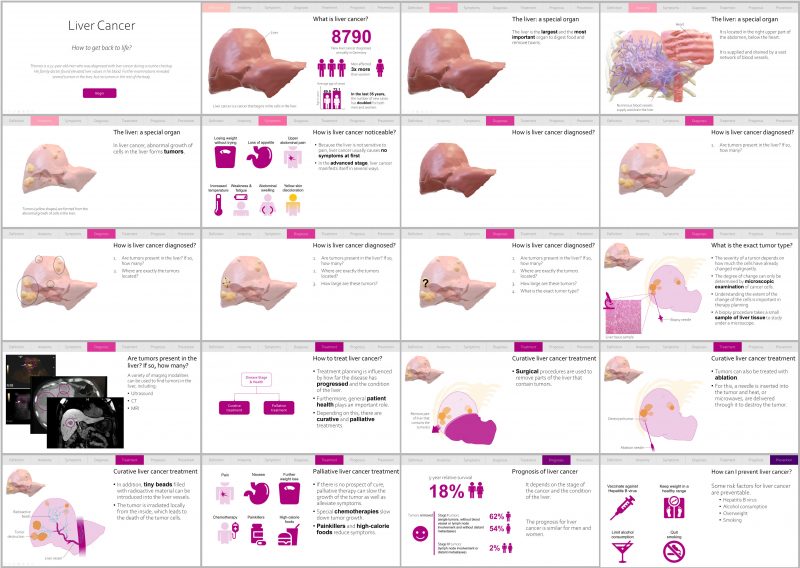Narrative Medical Visualization
We applied narrative visualization techniques to medical data for explaining diseases to broad audiences. In this story, the viewer will learn about liver cancer, its cause, diagnosis, treatment, prognosis, and preventable risk factors. For this purpose, real patient data is combined with illustrative drawings, text-based descriptions as well as different interaction techniques to provide a viewer engaged data presentation.
Background Information
The idea of generating visualizations not only for experts and supporting their possibly complex analysis process, but to address broad user groups through simplified, strongly guided interactive visualizations (narrative visualization) goes back to Segal & Heer (2010). Narrative visualizations are based on the fact that the information to be conveyed is embedded in a story, is prepared very well. A common structure is to first present information prepared by the author sequentially and then give the user opportunities to delve into sub-areas. Short animations, e.g., illustrating developments in a crisis area based on cartographic representations, are often integrated into the interactive visualization. Textual components, such as labels and captions, are also central. The concept has now been refined by many authors and has been applied in various fields, e.g., astronomy and climate research, which have generated widespread interest. In the field of medicine, there has been no research at all on visualizations with public appeal. At the same time, the public is very interested in information about new diagnostic methods, new treatment procedures, and prevention strategies.
We worked together with partners at the University of Bergen (Norway) to develop ideas, concepts, and a research agenda for narrative medical visualization, which we have published in a position paper (Meuschke, 2021). We have thought through how narrative visualizations can be developed that focus on diseases and inform, for example, about preventable risk factors, progression, and the benefits of timely therapy. This image was created as part of this paper.

